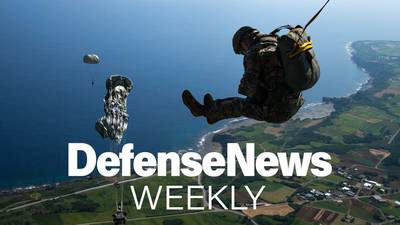In March 2022, the International Institute for Strategic Studies presented the findings of its Defence Policy and Economics of the Middle East and North Africa research program at the IISS Riyadh Defense Forum. Key findings included that while defense spending in the Middle East and North Africa accounts for between 8-10% of the annual global total, the region has in recent years been the destination for up to 25% of global defense exports.
The region is, therefore, a crucial market for defense exports, but it is one that is increasingly seeking to develop domestic capabilities. An impediment to the region’s defense localization ambitions is that regional investment in defense research and development has been too low, accounting for less than 1% of defense budgets on average over the last decade.
Reviewing in-service air and naval holdings for the 11 countries the research program analyzed, the U.S. dominates the air domain, providing 67.5% of all combat aircraft; France, the U.K. and Russia are the other suppliers, each accounting for about 10%.
In the maritime domain, the field of suppliers is wider. France leads, having provided 24% of total stock; Germany 19%; the U.S. 17%; and seven other countries provide the remainder.
Interestingly, Russia provides 11% of naval capability and 9.5% of aircraft fleets. Owing to its requirement to supply its own forces and suffering under defense-focused sanctions, Russia is likely to struggle to supply traditional and emerging buyers, and will no longer be able to innovate. Moreover, noting the region’s preference for superior military equipment and observing the woeful performance of Russian platforms in its invasion of Ukraine at sea, in the air and on land, one can presume Russia’s capacity to build market share has been extinguished.
Having suffered from Houthi and Iranian missile and UAV attacks, most notably in Saudi Arabia at Abqaiq in September 2019 and in Abu Dhabi in January and February 2022, the region is alert to the threat from the air flank. This will have been amplified by Russia’s successful use of Iran’s Shahed-136 direct-attack munition against civilian and energy targets in Ukraine. The region will want to better defend itself from air attack and equip itself to be able to employ armed and direct-attack UAVs.
In 2014, none of the 11 countries owned combat UAVs. By 2022, eight had acquired them and two (Israel and the United Arab Emirates) had developed armed variants. Missile Technology Control Regime restrictions mean regional states have turned mainly to China and Turkey for UAV purchases. The region must additionally be concerned a quid pro quo of Tehran’s provision of materiel to Russia will be a sale of modern aircraft to Iran; there are 24 Sukhoi Su-35 Flanker M aircraft available, owing to a now-shelved deal with Egypt.
In a similar vein to UAV procurement and development, the region is determined to keep pace with developments in emerging and disruptive technologies. Being party to the so-called fourth industrial revolution is an element of many of the 11 nations’ national visions — but only three (Israel, Saudi Arabia and the UAE) have expressed it in policy. These countries are interested in such technologies to meet their aspirations for domestic development. The establishment of diplomatic relations between Israel and the regional countries of Bahrain, Morocco and the UAE, moreover, means defense cooperation in this field can be mutually beneficial.
What can one conclude about the region? Without significant increases in research and development, regional defense-industrial goals that include localization and domestic-capability independence will be difficult to achieve. Furthermore, these increases will only be effective if they are accompanied by sustained investment in the defense-industrial base, targeted development of human capital skills, and a formalized, transparent defense-industrial policy.
To be in the Middle Eastern and North African market, traditional suppliers will need to better satisfy the region’s localization aspirations. Aside from technology transfer, offsets could usefully contribute to enhancing research and development capacity as well as the development of human capital skills. Superior air and maritime platforms will continue to be the region’s preference, but identifying ways to be more involved in UAV development as well as emerging and disruptive technologies will be important. Without presence in these areas, the region will increasingly need to find alternative suppliers.
Diversification of strategic relationships is already a widely held regional policy, and traditional suppliers should want to remain the principal strategic defense partners. Although the region has not yet realized it, Russia’s strategic ties should be much reduced.
Lt. Gen. Tom Becket (ret.) is an executive director at the International Institute for Strategic Studies, where he focuses on the Middle East.








